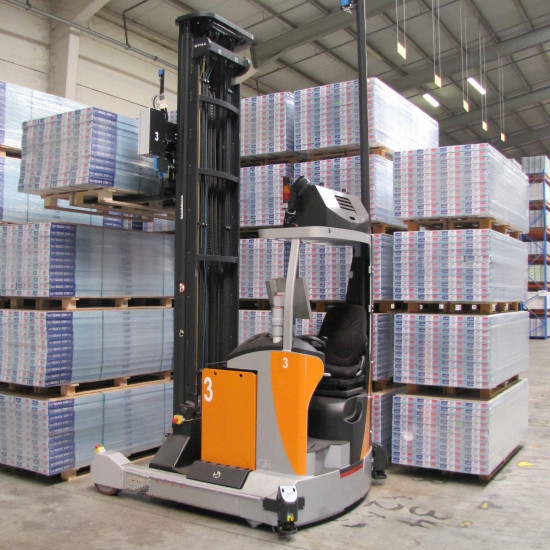In the automatic handling process, the AGV car receives instructions from the base master computer through the communication system and reports its own status. The host computer issues the task to the AGV and collects the information sent by the agv (automatic guide vehicle) to monitor the working status of the AGV(automatic guide vehicle). The following monitoring can be done by the on-board computer: manual control, safety device startup, battery status, steering limit, brake release, walking light, drive and steering motor control, and charging contactor.

The on-board computer that automatic guide vehicle is equipped with is generally implemented on the hardware by a PLC controller or a single-chip microcomputer. It is the direct control hub for the AGV robot to drive and carry out operations. The main functions to be completed are: receiving commands and tasks issued by the master control computer; The computer reports the automatic guide vehicle car's own status, such as AGV's position, running speed, direction, fault status, etc.; it automatically runs to the destination loading and unloading station according to the accepted task and running route. In this process, the selection of the running route and the running speed are automatically completed. Selection, automatic unloading of goods, avoidance of trolleys in the direction of operation, safety alarms, etc.
There are two ways to communicate systems: continuous and decentralized.
1, continuous type. The AGV is allowed to use radio frequency methods at any time and at any position relative to the ground controller, or to perform inductive communication using wires embedded in the guide path, such as radio and infrared laser communication methods. At present, infrared laser online real-time two-way data communication can reach a distance of 120 meters. If the laser power is insufficient, it can be relayed every 15~20 meters.
2, decentralized. At a predetermined location, such as an AGV robot docking station, communication is provided between a specific AGV and a ground controller. This kind of communication is generally achieved through induction or optical methods.
 中文
中文 English
English
